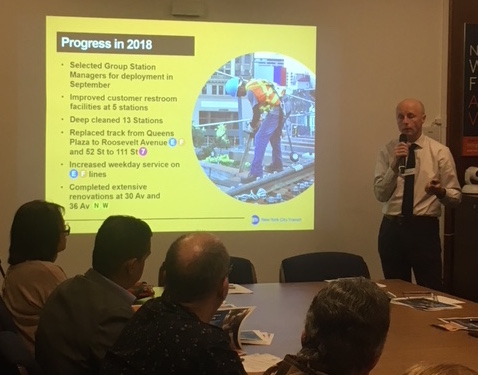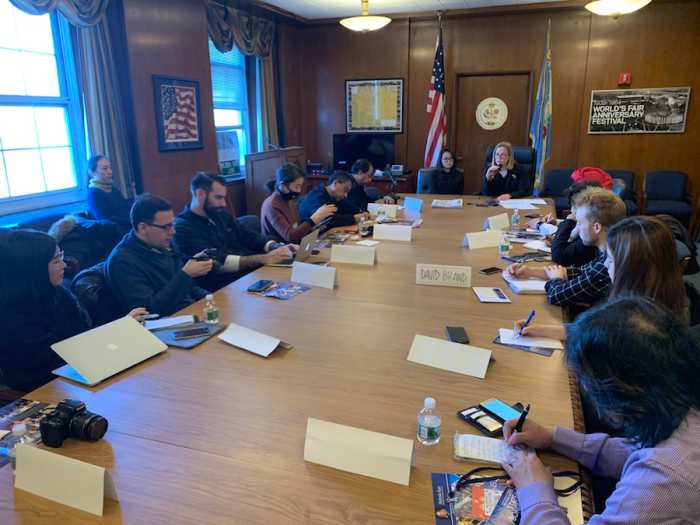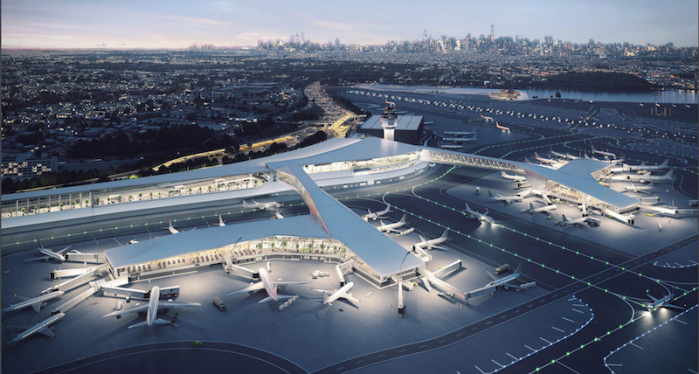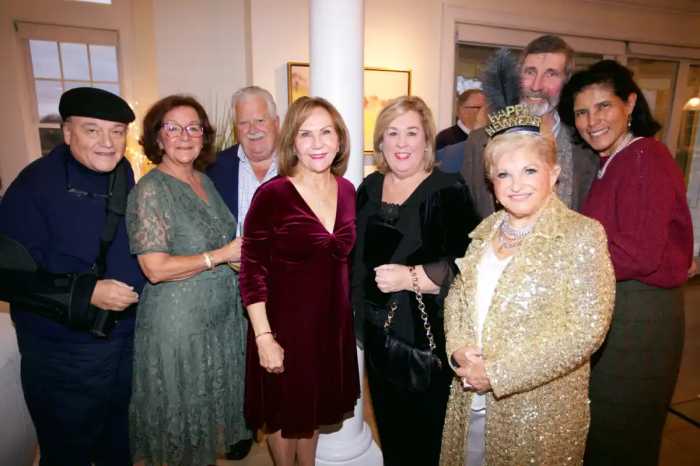Andy Byford, president of MTA New York City Transit, which oversees the city’s subways and buses, yesterday came to Queens and reported that all the 7 train signals have been updated and promised noticeably better Queens bus service within three years.

Byford made the statements as part his presentation on the city’s transit system before Queens Borough President Melinda Katz and the Queens Borough Board, which is made up of the borough’s city council members and community board district managers. The presentation was held at Queens Borough Hall in Kew Gardens.
In introducing Byford, Katz asserted the current unsustainable condition of New York’s mass transit, despite it being “the largest in North America” with a subway system that transports “more than 5.6 million riders per day.”
Byford, who has decades of experience working on mass transit systems throughout the world, asserted “without question, the toughest job in world transit has been my nine months here.”
He then drew the board’s attention to a PowerPoint presentation on the matter, which began with a slide asserting that “the greatest city in the world relies on a transit system in a state of emergency.”
Byford expressed pleasure that MTA Chairman Joe Lhota was involved in the plan of action, and said that the most immediate priority was to “stabilize the existing system,” which included sealing leaks, maintaining train cars, and repairing issues with tracks and signals.
“The amount of work we’ve done is beginning to bear fruit,” said Byford. “Though the system still isn’t reliable enough because we’re doing so much work at night and on weekends.”
Byford also advocated four major ways that the MTA can improve the city’s transit system: heavy investment in infrastructure, adjusting the organization’s culture, overhauling internal processes, and emphasizing a greater customer experience.
Some of the steps he suggested the MTA take to achieve these goals included the appointment of a “chief customer officer for customer experience,” greater accessibility for passengers with disabilities, new and improved signalling systems, and more appreciation for MTA employees. “We need a workforce that is motivated and cherished,” Byford said.
Regarding the 7 Train, Byford said all the signaling has now been updated and will run similar to how the L train line has been updated.
Despite the scope and magnitude of his proposals, Byford is optimistic about the overall transit project’s completion.
“It should take 50-60 years to complete, so I challenged my team to look at it another way,” he said. “Now we can do it in five years, with all Queens bus lines improved in three years.”









